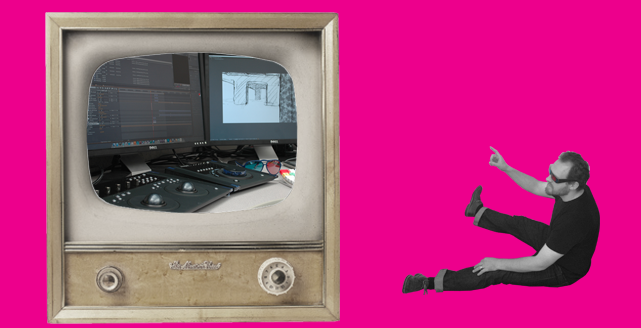Meet the Gear is a new series that introduces readers to the 3D technology in our arsenal. For the first installment of MTG, 4th year Interaction Design student Justin Alm sat down for an interview with 2nd year MAA student Sean Arden in the Motion Capture and Stereographic Studio at Emily Carr University of Art + Design.
What kind of filmmaker uses the Kerner Rig?
The Kerner Rig is designed for broadcast TV or shooting a major motion picture. The rig is for using two high end cameras to generate a 3D image. First of all, you’re going to have to know how to use the cameras at your disposal and you’ll need experience shooting 2D. The Kerner Rig also requires an amount of knowledge of 3D filmmaking. Why you would want to use two cameras? To have the ability to change the space between your cameras – the interaxial and convergence. Also, it has motorized lenses. The rig is for an advanced filmmaker. That being said, we all reach advanced level by becoming beginner and intermediate filmmakers.
When learning 3D, I recommend using smaller point-and-shoot cameras and then graduating up to something like this. If you were on a 4 year program of learning 3D, you would start using the Kerner Rig at year 4. This is the type of camera you would shoot your grad film on.
Kerner Rig back view
Can you tell me about how the rig house two cameras?
The Kerner Rig is a beam-splitter rig. That means there is a 50/50 mirror, at 45˚ on the from of the rig. One camera is mounted horizontally shooting through the mirror, and another camera is mounted vertically shooting off the reflective side of the mirror. Using zoom lenses is ideal because you can change your focal length without having to adjust the camera or the rig at all.
Kerner Rig front view
Is the Kerner Rig something you can move around easily once it has been set up?
Ideally, a system like this is mounted on a dolly with a hydraulic arm, jib-arm, or a slider, so you can get some movement with the camera. 3D often looks best when the camera is in motion. Even if the motion is a subtle pan, slide, or dolly, it makes a big difference for your shot.
Can you get out of the studio and get mobile with it?
Sure, the Kerner Cam gets all its calibration and set up done in the studio before you go on site. Once the lenses and cameras are calibrated, you can lock it down and pack it up in four cases that will meet airline requirements. Then on on set it takes about 15min max to get the camera up and ready to shoot. Its a really great system.
What interesting techniques can be achieved using the rig?
The possibilities are numerous but we are still learning. An interesting technique is to use two cameras to make a 2D image – like for High Dynamic Range image. There’s a lot of cool stuff you can do. We have mostly been teaching and learning with the Kerner Rig. It is a great tool because you have full range of motion in the space between your cameras – the interaxial and convergence. As well, you have the full range of focal lengths so you can figure out what works at different focal lengths and interaxials. It’s just one of the great tools we have in the Stereoscopic 3D Centre that we’ve been doing research with



